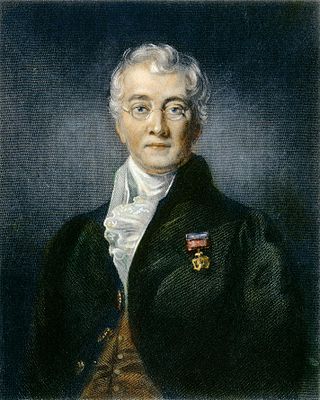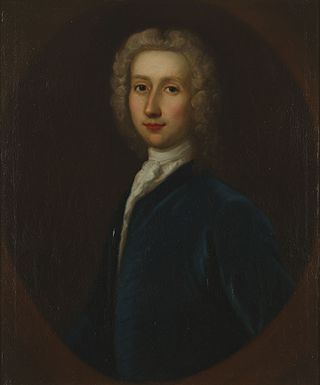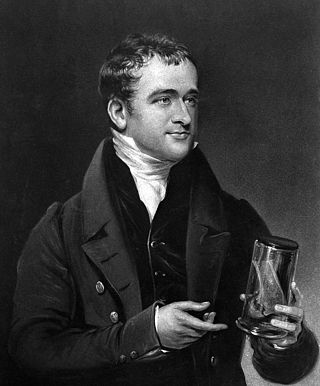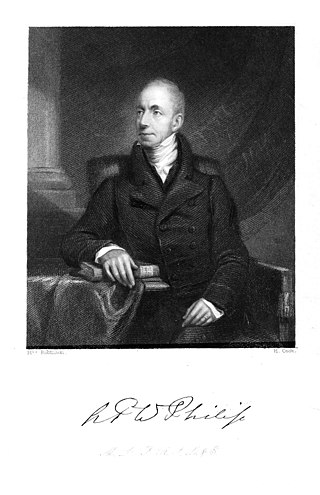Related Research Articles

William Cullen was a Scottish physician, chemist and agriculturalist, and professor at the Edinburgh Medical School. Cullen was a central figure in the Scottish Enlightenment: He was David Hume's physician, and was friends with Joseph Black, Henry Home, Adam Ferguson, John Millar, and Adam Smith, among others.

Abraham Colles was Professor of Anatomy, Surgery and Physiology at the Royal College of Surgeons in Ireland (RCSI) and the President of RCSI in 1802 and 1830. A prestigious Colles Medal & Travelling Fellowship in Surgery is awarded competitively annually to an Irish surgical trainee embarking on higher specialist training abroad before returning to establish practice in Ireland.

Sir Charles Bell was a Scottish surgeon, anatomist, physiologist, neurologist, artist, and philosophical theologian. He is noted for discovering the difference between sensory nerves and motor nerves in the spinal cord. He is also noted for describing Bell's palsy.

Marshall Hall FRS was an English physician, physiologist and early neurologist. His name is attached to the theory of reflex arc mediated by the spinal cord, to a method of resuscitation of drowned people, and to the elucidation of function of capillary vessels.

The Croonian Medal and Lecture is a prestigious award, a medal, and lecture given at the invitation of the Royal Society and the Royal College of Physicians.

Robert Whytt (1714–1766) was a Scottish physician. His work, on unconscious reflexes, tubercular meningitis, urinary bladder stones, and hysteria, is remembered now most for his book on diseases of the nervous system. He served as President of the Royal College of Physicians of Edinburgh.

George Fordyce was a distinguished Scottish physician, lecturer on medicine, and chemist, who was a Fellow of the Royal Society and a Fellow of the Royal College of Physicians.
Jacob Augustus Lockhart Clarke was a British physiologist and neurologist who is primarily known for his studies of the brain and the spinal cord.

Alexander Monro of Craiglockhart and Cockburn was a Scottish anatomist, physician and medical educator. He is typically known as Alexander Monro Secundus or Junior to distinguish him as the second of three generations of physicians of the same name. His students included the naval physician and abolitionist Thomas Trotter. Munro was from the distinguished Monro of Auchenbowie family. His major achievements included, describing the lymphatic system, providing the most detailed elucidation of the musculo-skeletal system to date and introducing clinical medicine into the curriculum. He is known for the Monro–Kellie doctrine on intracranial pressure, a hypothesis developed by Monro and his former pupil George Kellie, who worked as a surgeon in the port of Leith.
The Goulstonian Lectures are an annual lecture series given on behalf of the Royal College of Physicians in London. They began in 1639. The lectures are named for Theodore Goulston, who founded them with a bequest. By his will, dated 26 April 1632, he left £200 to the College of Physicians of London to found a lectureship, to be held in each year by one of the four youngest doctors of the college. These lectures were annually delivered from 1639, and have continued for more than three centuries. Up to the end of the 19th century, the spelling Gulstonian was often used. In many cases the lectures have been published.

John Aitken MD, FRCSEd was a Scottish surgeon, author and the first extramural teacher of medical subjects in Edinburgh since the foundation of the Edinburgh Medical school in 1726.
Sir William Fordyce was a Scottish physician.

Francis Home FRSE FRCPE was a Scottish physician, and the first Professor of Materia Medica at the University of Edinburgh, known to make the first attempt to vaccinate against measles, in 1758. In 1783 he was one of the founders of the Royal Society of Edinburgh.

Samuel Cooper FRS was an English surgeon and medical writer. He published a Surgical Dictionary which went through many editions.

John Cooke (1756–1838) was an English physician.

Thomas Kirkland M.D. (1721–1798) was an English physician and medical writer.
Sir Charles Scudamore (1779–1849) was an English physician, known for his writings on gout.

Herbert Mayo, M.D., was a British physiologist, anatomist and medical writer.

Alexander Philips Wilson Philip FRS FRSE was a Scottish physician, physiologist and medical author. He conducted experimental studies on animal and human physiology particularly dealing with digestion, circulation, and the nervous system. He is thought to have gone bankrupt and fled to France where he died in obscurity.

Thomas Chevalier, (1767–1824) was an English surgeon and medical writer who rose to become Surgeon Extraordinary to the King and Professor of Anatomy and Surgery to the Royal College of Physicians.
References
- 1 2 3 Bettany, George Thomas (1887). . Dictionary of National Biography . Vol. 09. p. 376.
- ↑ "John Caverhill". Oxford Dictionary of National Biography. Retrieved 19 December 2020.
- 1 2 "John Caverhill". Royal College of Physicians. Retrieved 19 December 2020.
- ↑ "Experiments on the Cause of Heat in Living Animals". Monthly Review . 43: 212–214. 1770.
 This article incorporates text from a publication now in the public domain : Thomas Bettany, George (1887). "Caverhill, John". Dictionary of National Biography . Vol. 9. p. 376.
This article incorporates text from a publication now in the public domain : Thomas Bettany, George (1887). "Caverhill, John". Dictionary of National Biography . Vol. 9. p. 376.